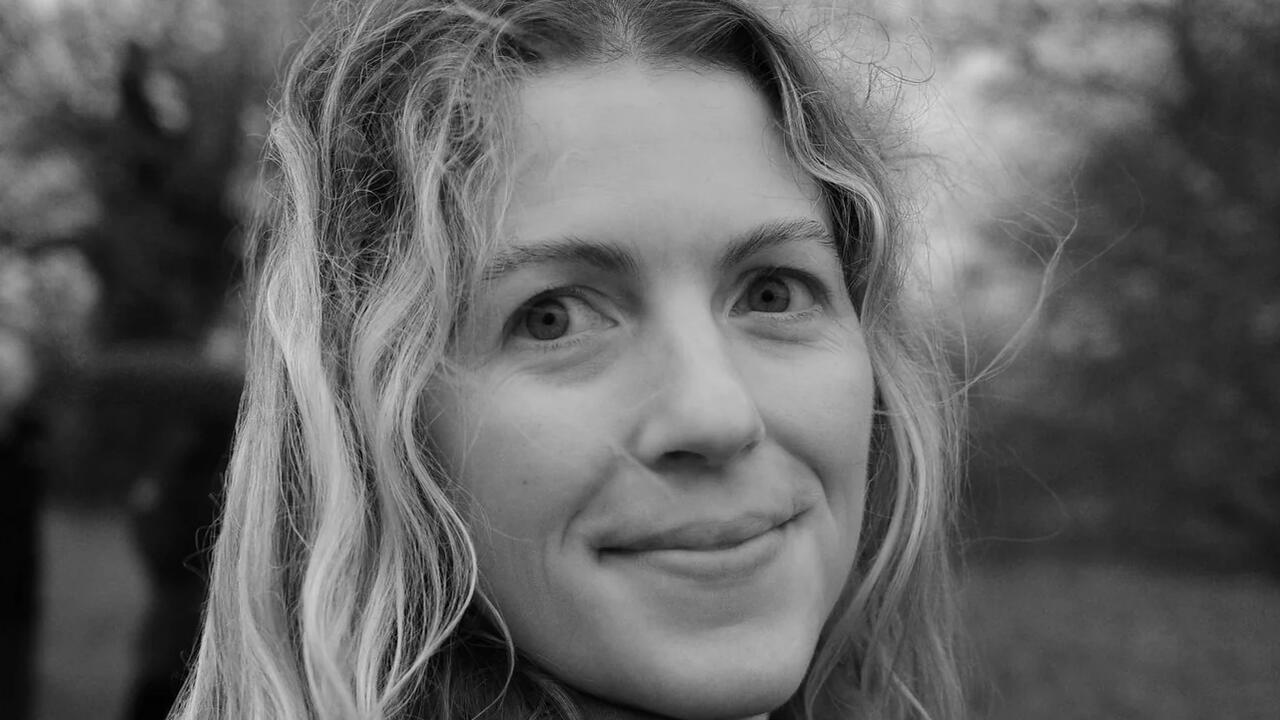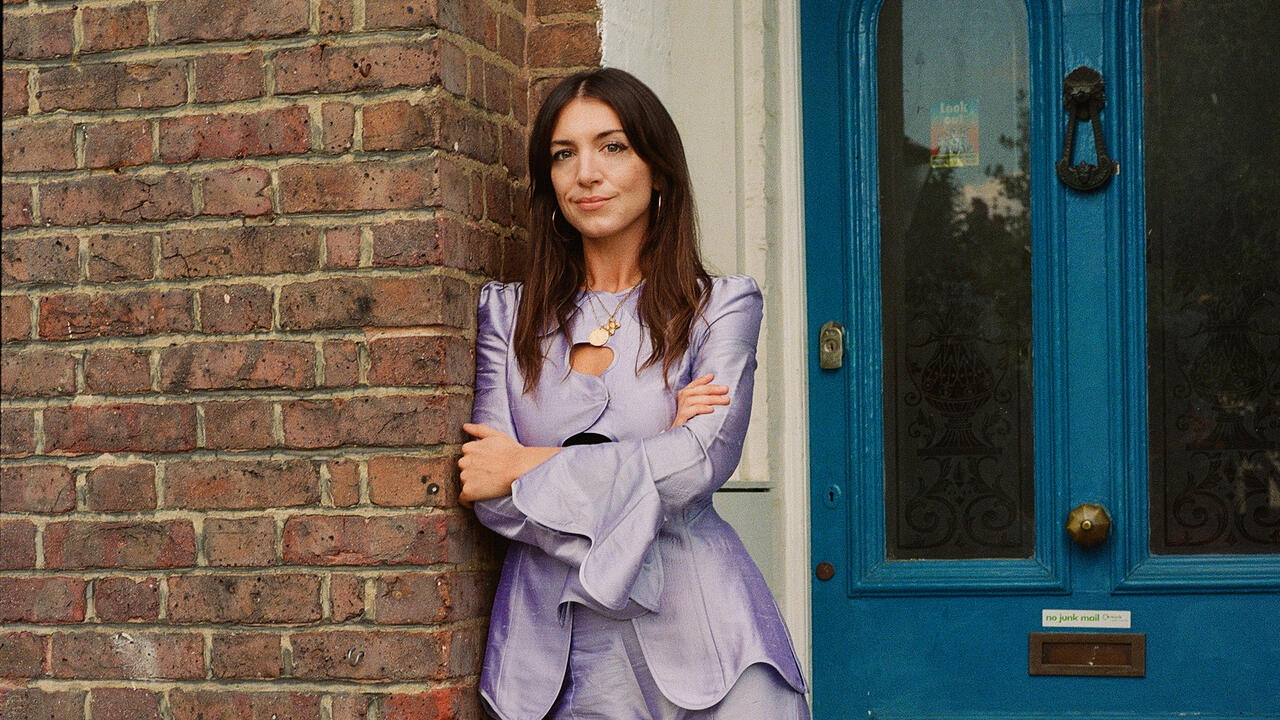Futurist Pastoral
A new book and exhibition explore a radical interwar collective: the Kindred of the Kibbo Kift
A new book and exhibition explore a radical interwar collective: the Kindred of the Kibbo Kift

The Long Man of Wilmington is a figure carved into the steep chalk side of Windover Hill in the Sussex Downs. The Long Man is holding a stave in each hand or – as I’ve sometimes fancied – is stepping through a portal in the hillside.
If you had hiked up the Long Man sometime in August 1929, you might have encountered the Kindred of the Kibbo Kift performing one of its rituals, tapping the antiquarian energies of English prehistory. The members of this interwar movement – whose numbers fluctuated between 200 and 800, and which was most active between 1920 and 1932 – were living symbols. They hiked in arrow formation, the men wearing hooded jerkins and shorts, the women in knee-length dresses. Long obscure, the art, craft and mysticism of the Kindred can now be recognized as a vital entry in alternative modernism, drawing new generations of artists, writers and historians into a compelling and contrary world view.
The exhibition ‘Intellectual Barbarians: The Kibbo Kift Kindred’ at the Whitechapel Gallery, London, presents the group’s broad-shouldered golden ceremonial tunics and the Kinlog itself: an illuminated manuscript by Kathleen Mabel Milnes, or ‘Blue Falcon’ as she was known within the movement. The Kinlog is nearly 55 cm high and 41 cm wide: 600 pages of gilt-edged paper in all, hand-stitched and bound between embossed decorative leather end-boards. It comes with its own intricately carved wooden lectern.
The show accompanies Annebella Pollen’s new book on the movement. Strikingly designed by Roland Brauchli and published by Donlon Books, it explores the Kindred in word and deed. Pollen’s research and insight into the movement is interspersed with the photography of member Angus McBean – better known for his surrealist portraits of Audrey Hepburn and Vivian Leigh – and examples of the Kindred’s futurist illustrations. For the first time, the Kindred is given its due as an art phenomenon rather than as a sociological footnote in studies of youth movements.

The Kindred was deliberately performative; at times, self-consciously ridiculous. Its membership consisted of free-thinkers of every stripe: theosophists, socialists, cranks and individualists, all under the formidable leadership of a young war veteran called John Hargrave.
As a pacifist and Quaker, Hargrave spent his war service in the ambulance division. He was caught up in the terrifying failure of the Allied landing at Suvla Bay in the Gallipoli campaign. He owed his survival on this parched rocky battlefield to his talent as a scout. As a science-fiction writer, I was struck by Hargave’s brutal account of the battle, published while the conflict was ongoing; dismissing ideas of honour and sentiment, he portrays the war only as a process of mechanical death.
To recover from the trauma, Hargrave lived in a caravan in Kings Langley, northwest of London, and took to meditation. In this caravan camp, he synthesized his study of prehistory and world religions. (He went into battle with a copy of the Koran in his pack.) Here, along with his inner circle, Hargrave devised the Kindred of the Kibbo Kift; they would answer HG Wells’s call for intellectual barbarians to renew civilization.
After the war, Europe was – in the memorable words of the us Ambassador of the time, Walter Page – ‘a bankrupt slaughter-house inhabited by unmated women’. Its cultural, economic and political structures were discredited. Hargrave, then in his early 20s, imagined that heand his cohort could inspire the necessary transformation.

Real change would require a new economic system. Hargrave was converted to the theory of social credit, as formulated by Clifford Douglas, whose ideas were soon taught at Kin meetings. By the early 1930s, in the face of mounting conflict between fascism and socialism, the Kindred voted to transform itself into a street-protest movement called the Green Shirts. Ostensibly performative – Hargrave insisted the paramilitary garb was a costume, not a uniform – the Green Shirts marched with 100 drummers. The main targets of their actions were the bankers: in 1938, Green Shirts burnt an effigy of the governor of the Bank of England outside the bank itself.
If the Kindred’s critique of the banking system adds to our contemporary interest, it also contributed to its obscurity. In the 1920s and ’30s, critics of international finance were often conflated with anti-semites and the raised open hand of greeting, common to woodcraft groups of the time, can be mistaken in old photographs for a Nazi salute. However, Hargrave was explicit in his denunciation of Hitler as early as 1922, and a chapter of his The Confession of the Kibbo Kift (1927) includes a chapter mocking racial absurdities and Nordic nonsense.
A collection of brilliant individuals, the Kindred of the Kibbo Kift was neither fascist nor a cult. In organized, scout-like lodges, its members trekked through the landscape, seeking out locations resonant of English antiquarianism: they dug latrines, set campfires, pitched their painted tents, held fleet-foot races and performed magickal rituals. They lived in a symbolic world, if only for the weekend, their aesthetic powered by paradoxes – futurist pastoral, mystical pragmatism, an autocratic collective – that has placed them in a camp outside of the definitions of history, an autonomous zone of alluring strangeness.





















